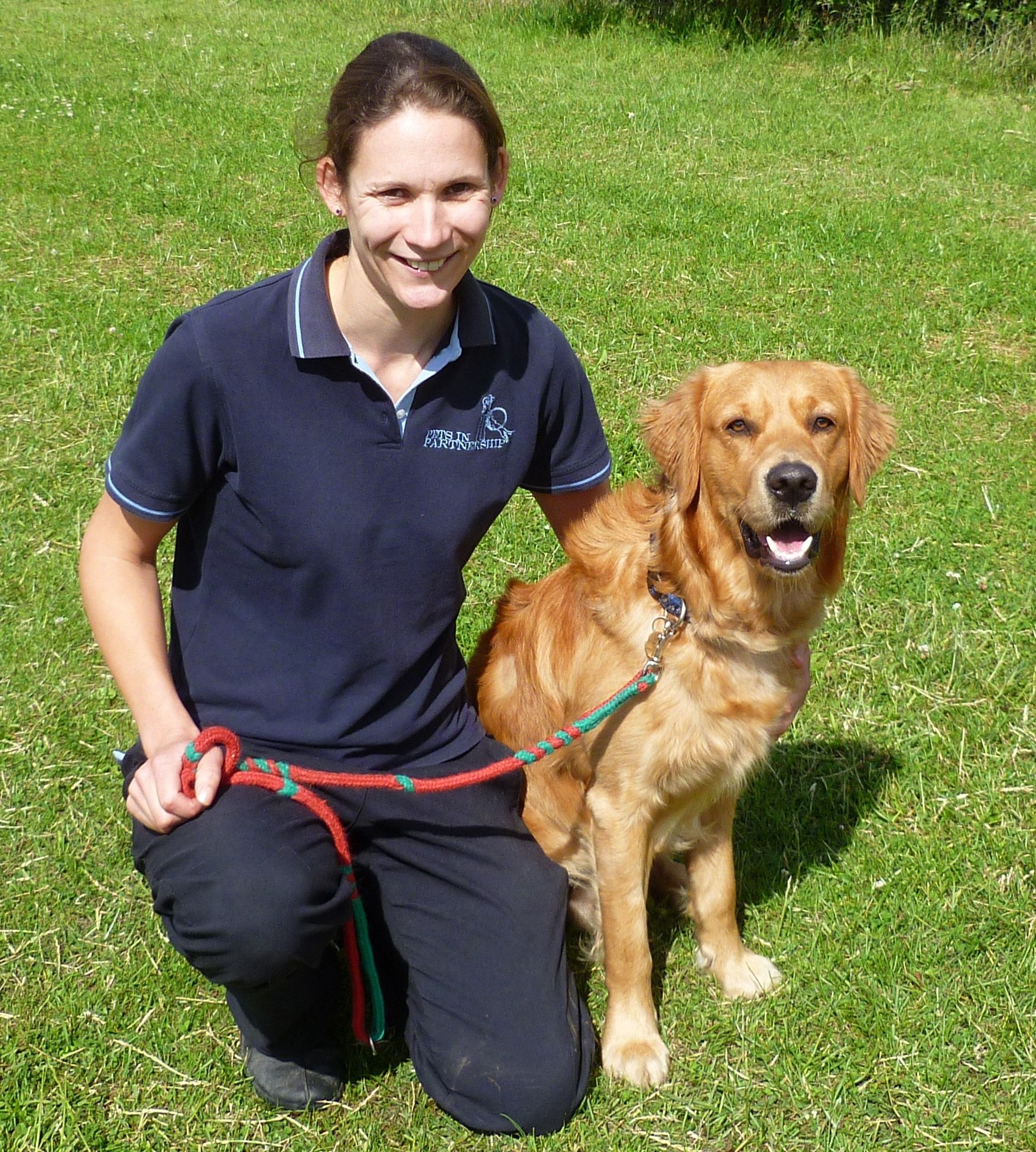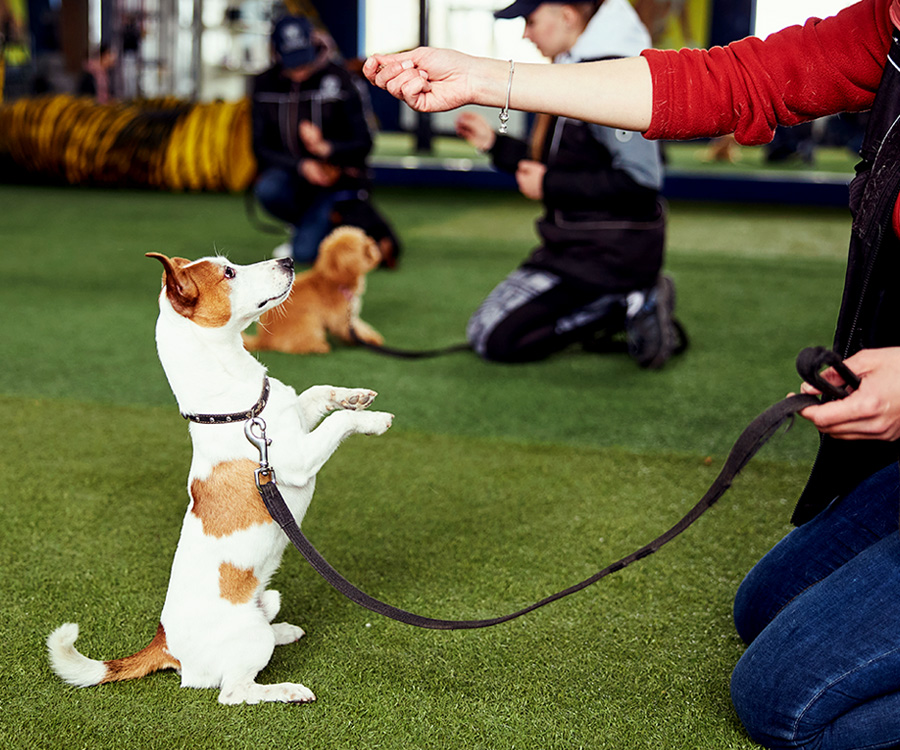Common Mistakes to Avoid During Dog Training for Better Results
Transform Your Canine's Behavior With Proven Training Methods
Changing your canine's behavior calls for a nuanced understanding of their private characteristics and needs, as well as the application of proven training approaches. Consistency in your training method not only improves obedience but additionally promotes a deeper bond of trust fund and regard in between you and your family pet.
Comprehending Dog Behavior
Comprehending canine actions is necessary for efficient training and communication in between humans and their canine friends. Canines, as social pets, show a series of behaviors affected by genetics, atmosphere, and experiences - Dog training. Recognizing these habits helps proprietors tailor their training approaches to satisfy the specific demands of their dogs
Secret aspects of pet dog actions include body movement, vocalizations, and social communications. A wagging tail commonly suggests excitement, while a decreased head might signal entry or fear. Understanding these signals can aid owners translate their pet's emotional state and react properly. Additionally, socialization plays an essential duty in forming habits; pets that engage favorably with different people and other animals are typically much more versatile and well-adjusted.
Furthermore, recognizing stress signals-- such as evasion, panting, or pacing behaviors-- can prevent escalation into more significant concerns. Proprietors that are in harmony with their pet's habits can create a caring and risk-free atmosphere, promoting count on and enhancing the training process. Ultimately, a deep understanding of canine actions lays the structure for an unified partnership and effective training end results, guaranteeing both dogs and their proprietors prosper with each other.
Favorable Reinforcement Strategies
Positive support techniques are commonly recognized as one of the most effective approaches for training pet dogs, cultivating a positive knowing setting. This technique involves gratifying wanted habits with deals with, praise, or play, thus encouraging the canine to duplicate those behaviors. Unlike vindictive approaches, favorable reinforcement develops count on and enhances the bond in between the dog and the instructor.
To apply favorable reinforcement successfully, timing is essential. Incentives should be provided quickly following the preferred habits to help the pet make the connection. Consistency is also vital; utilizing the exact same commands and benefits helps the pet dog comprehend what is expected. In addition, varying the incentives can maintain the pet engaged - Dog training. For instance, rotating between treats, toys, and verbal praise can preserve rate of interest and motivation.
It is vital to keep in mind that favorable reinforcement is not about bribery; instead, it is regarding enhancing excellent actions. With time, as the pet learns to associate details activities with favorable end results, the frequency of incentives can be gradually decreased, transitioning to spoken appreciation or periodic benefits. This technique not just encourages obedience but additionally advertises a confident and delighted canine, making training an extra satisfying experience for both parties included.
Addressing Usual Problems
Dealing with common concerns throughout canine training is essential for ensuring a successful and unified connection between the pet dog and its proprietor. Many pet dog owners come across behavioral challenges, such as extreme barking, leaping, and chain drawing. Comprehending the root creates of these behaviors is crucial for effective training.
Too much barking might come from dullness, anxiety, or an absence of socializing. To minimize this, provide ample workout, psychological excitement, and chances for social interaction with both people and various other dogs. Leaping can typically signify exhilaration or a need for attention. Training the dog to rest upon welcoming can redirect this habits favorably.
Chain pulling is one more widespread issue, frequently arising from a pet's eagerness to discover. Using appropriate leash managing techniques, integrated with training procedures that encourage loose-leash strolling, can considerably enhance this behavior.
Additionally, concerns like resource guarding or splitting up anxiousness need tailored strategies. Gradual desensitization and counter-conditioning can be effective in addressing these difficulties. By recognizing and proactively taking care of these usual problems, pet dog owners can promote an extra pleasurable training experience and strengthen the bond with their canine companions.
Uniformity in Training

To attain uniformity, it is important that all participants of the family abide by the exact same training methods. Making use of the exact same spoken hints and hand signals guarantees that the dog obtains uniform messages. In addition, the timing of improvements and benefits must correspond; prompt reinforcement raises the probability that the dog will associate the behavior with the end result.
In addition, establishing a regimen can additionally enhance uniformity. Normal session, combined with organized routines for feeding, strolling, and playtime, aid canines anticipate and recognize their setting, making them extra responsive to training. Inevitably, consistency promotes a complacency and count on, equipping pets for more information effectively. By committing to a structured learn the facts here now technique, trainers can advertise positive behavior adjustments and cultivate a courteous companion.
Building a Strong Bond
Exactly how can promoting a strong bond between a dog and its proprietor improve the training experience? When a canine feels safe and secure in its connection with its owner, it is extra most likely to exhibit favorable habits and be receptive to learning.
In addition, a solid bond facilitates far better communication. Dogs are experienced at checking out human cues, and a relying on connection enables more clear signals during training. Proprietors who spend time in building this bond via play, socializing, and positive reinforcement develop an atmosphere where dogs really feel motivated and anxious to discover.
Furthermore, a well-established link can decrease anxiousness and behavioral concerns, as canines are much less likely to act out when they really feel recognized and looked after. Therefore, focusing on the growth of a strong bond not just boosts the training experience yet likewise adds to a happier and a lot more well-adjusted canine. Inevitably, the journey of training transforms into a joint partnership, causing lasting behavior improvements.
Final Thought

Owners that are attuned to their pet dog's behavior can produce a caring and risk-free atmosphere, fostering count on and enhancing the training procedure. Inevitably, a deep understanding of canine habits lays webpage the foundation for a harmonious partnership and reliable training end results, making sure both canines and their owners thrive with each other.
Attending to typical issues during pet dog training is essential for making sure a effective and unified relationship in between the canine and its owner.Uniformity is a foundation of effective pet training, as it establishes a clear structure for the pet dog to recognize assumptions and habits.In conclusion, go to my blog changing a canine's actions with proven training methods requires an understanding of canine behavior, the application of positive support methods, and a focus on uniformity.